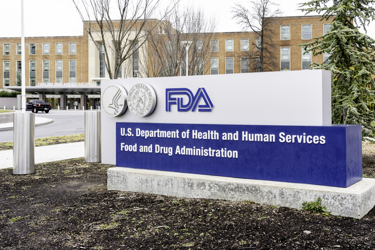New FDA Draft Guidance: Data Monitoring Committees In Clinical Trials
By John Giantsidis, president, CyberActa, Inc.; and Remco Jan Geukes Foppen, Ph.D.

Clinical trials are not without risks, and while the prospective success is encouraging, oversight of clinical trials mandates coordination and ongoing review of safety, efficacy, quality, ethics, adjudication, operations, and logistics. This led to the creation of data monitoring committees (DMC), data and safety monitoring boards (DSMB), data and safety monitoring committees (DSMC), and independent data monitoring committees (IDMC), which have been utilized by sponsors of clinical trials for investigational drugs, biologics, and medical devices since the early 1960s.
For the first time since 2006, the FDA has proclaimed its broad expectations for the scope of oversight, conduct, and practices of a DMC because of the increased use of DMCs in trials, DMC charters becoming longer and more detailed, an increased use of DMCs to implement adaptive clinical trial design and oversee an entire clinical development program, and the ever-growing globalization of medical product development. We will highlight FDA’s new DMC recommendations and considerations as evidenced in the draft guidance.1
Why Is The FDA Publishing This DMC Guidance Now?
The recent efforts in driving digital transformation are the reason for an explosion of data in healthcare. AI promises to make better decisions across different silos and data sources by enhancing acquisition, processing, and interpretation. Current trends are expanding the AI toolbox very rapidly. Examples of these trends are generative and multimodal AI, quantum technologies, federated learning, and computer vision. AI and machine learning give us more insight into clinical data than ever before. Many AI and ML-based medical systems adapt in real time, and this evolution may challenge “static” regulatory assessments, inspections, and audits.
Clinical Trial Success Prediction
Pharmaceutical companies invest a lot of money to come up with ways to structure clinical development strategy, to improve the success of therapies going through to market, and to stop developing the therapies that won’t work early in the process. With more heterogeneous data becoming available and the quality of the data sets improving, the performance of machine learning models to infer the probability of success in clinical trials will improve as well. Also, this provides a means for regulatory organizations to successfully predict efficacy and safety before the trial is finalized, given information on trial design and patient eligibility. These insights would show how to apply eligibility criteria to improve the probability of success from the standpoint of better recruitment rates and in which subpopulations the drug would work, even before investing in a clinical development program.
Radiomics
Computer vision systems can analyze medical images, like X-rays, MRIs, and CAT scans, with speed and accuracy. Over the past two decades, we have seen an empathic increase in radiomic research output. This progress will spill over into clinical trials. Multidisciplinary teams will benefit most from clinical-radiomic models where image analysis can be combined with genomic profiles to predict therapeutic development.
Real-World Evidence
Real-world evidence (RWE), through granted access to electronic health records and medical claims data, can expand the perspective of traditional clinical trial setups. This promises a positive impact on drug development, supporting regulatory decision-making, and its potential to expand the known patient population. Social media, which reflects the perspective of patients, is also a growing source of RWE and has been part of the industry’s analysis of acceptance of a drug for a while. The content and associated meta-data provide a level of reporting that can describe features of a population through clustering of demographic, behavioral, and psychographic data. Blending different sources of RWE is an opportunity for drug repurposing initiatives.
Determining Whether To Use A DMC
The use of a DMC is mandated when an institutional review board (IRB) approves a clinical trial for emergency research without requiring informed consent from all research subjects. However, FDA strongly recommends establishing a DMC if trial subjects are at risk of serious morbidity or mortality (e.g., hospitalization, heart attack, stroke, death) where investigational products may cause serious unexpected adverse events and where an assessment of causality can be made on the basis of a single event.
DMCs And Other Oversight Groups
The FDA set its focus on the expected relationship between a DMC and the other common oversight groups.
Institutional Review Boards
FDA stresses that in trials where serious morbidity or the enrollment of vulnerable populations is a possibility, “an IRB should inquire as to whether a DMC has been established, and if so, seek information about its scope and composition as part of its oversight.” This regulatory emphasis may increase the likelihood of an IRB refusing to approve or consider a clinical trial unless a DMC is in place.
Clinical Trial Steering Committees
The FDA draft guidance addresses the use clinical trial steering committees and sets the boundaries that those steering committees “should always be blinded to outcomes by study arm,” and any direct interactions between a steering committee and a DMC should occur during open sessions of the DMC, when recommendations are communicated to the clinical trial sponsor.
Endpoint Assessment/Adjudication Committees
FDA plainly expects that a DMC should not adjudicate clinical trial endpoints because it may have access to unblinded comparative data. The FDA strongly suggests that sponsors should establish an endpoint assessment/adjudication committee (also known as a clinical events committee) to review important endpoint data reported by clinical investigators, especially in adaptive design of clinical trials.
Clinical Site Monitors and Entities Reviewing Safety Reporting
The FDA draft guidance reiterates that compliance with safety requirements is the responsibility of the sponsor’s monitors and safety reporting personnel, not a DMC. A DMC can recommend that the sponsor modify or stop the trial because the investigational product (1) is not effective; (2) has caused an unexpected adverse event in a drug or biological product trial under 21 CFR 312.32 or an unanticipated adverse device effect that presents an unreasonable risk to subjects in the case of a device trial under 21 CFR 812.46(b) and 812.150(b)(1); or (3) has clearly been shown to be effective, generally using planned interim analysis procedures.
Adaptation Committee
hat For sponsors that wish to utilize an adaptive design, the FDA’s draft guidance recommends establishing a dedicated independent “adaptation committee” or assigning this role to a DMC, as part of its written charter. It further incorporates practices from Adaptive Designs for Clinical Trials of Drugs and Biologics2 and Adaptive Designs for Medical Device Clinical Studies.
DMC Establishment And Operation
Committee Composition
The FDA expects that a DMC should be equipped to identify unexpected issues and mitigate problems that could otherwise cause risk to subjects or could adversely affect the quality of the data and integrity of the trial, including using an independent biostatistician and screening potential members for expertise in informatics, technology, and regulatory requirements in addition to financial and intellectual conflicts of interest or bias. The FDA further guides that for clinical trials with unusually high risks to subject safety or with broad public health implications, the DMC should consider including a medical ethicist.
Establishing a Charter Describing DMC Obligations, Responsibilities, and Standard Operating Procedures
The new FDA guidance further spells out the establishment of a written charter describing DMC composition, obligations, responsibilities, and operating procedures with the following minimum elements:
- Composition of Committee:
- criteria and rationale for selection of committee members
- outline and clarification of roles of committee members, including voting and nonvoting members
- procedures for assessing financial and intellectual conflicts of interest of potential DMC members
- procedures for adding or removing members when appropriate or for disbanding the DMC, including procedures for informing FDA and disclosing to FDA the rationale for these changes
- Meeting Information, Schedule, and Format:
- planned frequency of meetings, when additional meetings might be scheduled, and preferred platform for communications and conditions for convening ad hoc meetings
- who may attend open and closed portions of DMC meetings and whether any members will not attend full meetings
- who will create specific reports and have access to them, where reports will be stored, what reports will be generated in the course of the clinical trial, and how they will be transmitted within and outside of the DMC
- handling of meeting minutes for open and closed portions
- definition of a quorum of DMC members, including representation of scientific and other disciplines
- Planned Analyses by Committee and Protection of Data, if applicable, including:
- schedule and basis of planned interim analyses identified in the protocol and/or statistical analysis plan
- analyses associated with prespecified safety considerations
- Maintaining Confidentiality of Data:
- how unblinded analyses will be prepared for the DMC and at what frequency
- how blinding of the trial will be maintained for sponsors, investigators, and subjects
- what procedures will be followed to maintain confidentiality of interim comparative data in communications between the DMC, the sponsor, and outside parties
- what strategies will be used for maintaining blinding and confidentiality when preparing reports for the DMC open sessions
- who, besides the DMC and the independent unblinded statistician, will have access to interim data and reports to the DMC chair
DMC Responsibilities
The new FDA draft guidance pays particular emphasis on DMC review of unblinded efficacy data, and determinations for a predefined adaptive feature on:
- efficacy – statistically strong evidence of efficacy such that enrollment should be stopped;
- futility – potentially ineffective investigational; and
- other adaptations – changing sample size, modifying the randomization ratio, or restricting enrollment to a prespecified subgroup (“adaptive enrichment”).
The FDA further recommends determining thresholds for the early termination for harm and advises that sponsor should take immediate action and initiate discussions with FDA before suspending or terminating the trial in question or any other use of the investigational product. Should the DMC identify patterns of specific adverse events, the DMC can consider measures short of termination, including recommendations for changing eligibility or screening procedures, modifying the product dosage and/or schedule, and/or informing current and future trial subjects through modification of the consent form and reconsenting current subjects. In determining whether trial termination or modification for safety risks is warranted, the DMC should also evaluate emerging data regarding potential for benefit.
Interim Data and Analyses
The adoption of procedures for the minimization of bias is of particular importance to the FDA in adequate and well-controlled clinical trials for drugs and clinical investigations for devices. Sponsors are expected to establish procedures to ensure minimization of the potential for bias, such as maintaining confidentiality of the interim data. The FDA guides that before the initiation of a clinical trial, sponsors should consider addressing, in written agreements, trial design modifications that involve examination of comparative analyses, including discontinuation of treatment arms or adjustments to sample size based on estimated treatment effects observed during a trial. A DMC can be involved in making recommendations about planned (prespecified) adaptations based on their review of interim results. Lastly, FDA warned that it “fully expects” confidentiality of the interim data during interactions with sponsors and/or trial investigators.
Independence Of The DMC
FDA plainly stated that the independence of the DMC from the sponsor and the trial investigators is critical:
- ensures that sponsor interests do not influence the DMC;
- enhances the DMC’s objectivity and reduces the possibilities for bias, increasing the validity of the trial’s conclusions;
- maintains the ability of the sponsor to make trial modifications without introducing bias; and
- shields the sponsor and the trial from conflicts of interest.
Summary
The new FDA guidance emphasizes the regulatory reporting linkage between DMC recommendations regarding safety and FDA while setting expectations that DMC shall have access to safety data as well as efficacy data. As written, should a clinical trial sponsor conclude that there is a reasonable possibility that the increased rate of serious unanticipated adverse events was associated with use of the drug or biologic, the finding and support for it (DMC report, any analyses, and pertinent data) must be submitted to FDA as a serious unexpected suspected adverse reaction. Similarly, should a sponsor of an investigational medical device trial conclude that an increased rate of specific adverse events constitutes an unanticipated adverse device effect under 21 CFR §§ 812.46(b) and 812.150(b)(1), such is to be FDA reportable. Lastly, the new FDA guidance would require sponsors to inform FDA about all DMC recommendations related to the safety of the investigational product, whether or not the adverse events that led to the recommendation meet the definition of “serious.” Interested stakeholders can submit comments on this draft guidance for FDA’s consideration until April 15, 2024, to docket FDA-2001-D-0219 available at https://www.regulations.gov/docket/FDA-2001-D-0219. In the meantime, sponsors and CROs should review their DMC policies and procedures, and corresponding FDA reportability practices.
References
- https://www.fda.gov/regulatory-information/search-fda-guidance-documents/use-data-monitoring-committees-clinical-trials
- https://www.fda.gov/regulatory-information/search-fda-guidance-documents/adaptive-design-clinical-trials-drugs-and-biologics-guidance-industry
About The Authors:
 John Giantsidis is the president of CyberActa, Inc., a Boston-based boutique consultancy empowering medical device, digital health, and pharmaceutical companies in their data-driven digital, regulatory, cyber, and privacy endeavors. He is the vice chair of the Florida Bar’s Cybersecurity and Privacy Law Committee and a Cyber Aux with the U.S. Marine Corps. He holds a Bachelor of Science degree from Clark University, a Juris Doctor from the University of New Hampshire, and a Master of Engineering in Cybersecurity Policy and Compliance from George Washington University. He can be reached at john.giantsidis@cyberacta.com.
John Giantsidis is the president of CyberActa, Inc., a Boston-based boutique consultancy empowering medical device, digital health, and pharmaceutical companies in their data-driven digital, regulatory, cyber, and privacy endeavors. He is the vice chair of the Florida Bar’s Cybersecurity and Privacy Law Committee and a Cyber Aux with the U.S. Marine Corps. He holds a Bachelor of Science degree from Clark University, a Juris Doctor from the University of New Hampshire, and a Master of Engineering in Cybersecurity Policy and Compliance from George Washington University. He can be reached at john.giantsidis@cyberacta.com.
 Remco Jan Geukes Foppen, Ph.D., is an international business executive in AI and life sciences. He led commercial and business initiatives in image analysis, data management, bioinformatics, clinical trial data analysis using machine learning, and federated learning for a variety of companies. Remco has a Ph.D. in biology and holds a master's degree in chemistry, both at the University of Amsterdam. He can be reached on LinkedIn.
Remco Jan Geukes Foppen, Ph.D., is an international business executive in AI and life sciences. He led commercial and business initiatives in image analysis, data management, bioinformatics, clinical trial data analysis using machine learning, and federated learning for a variety of companies. Remco has a Ph.D. in biology and holds a master's degree in chemistry, both at the University of Amsterdam. He can be reached on LinkedIn.
